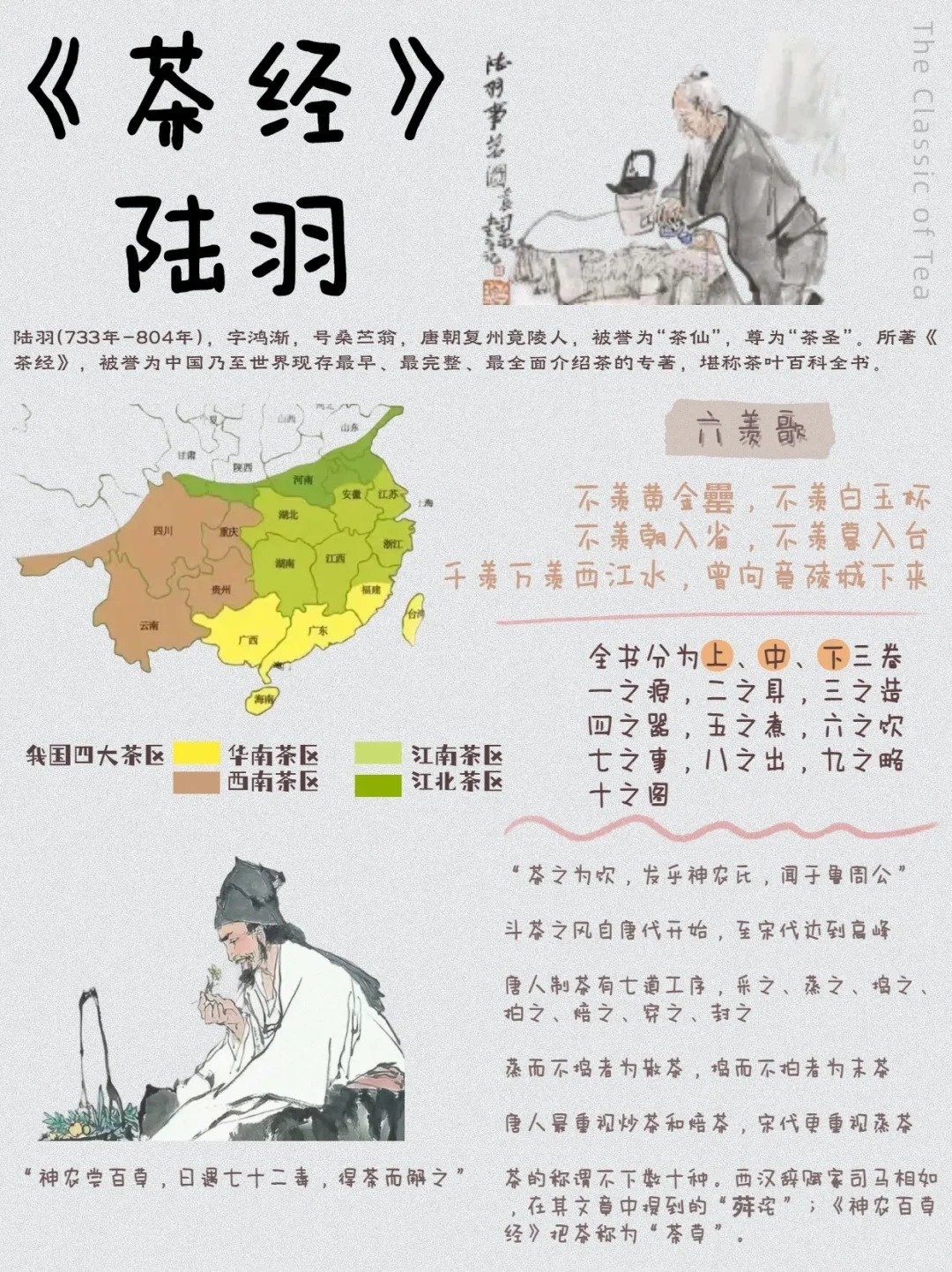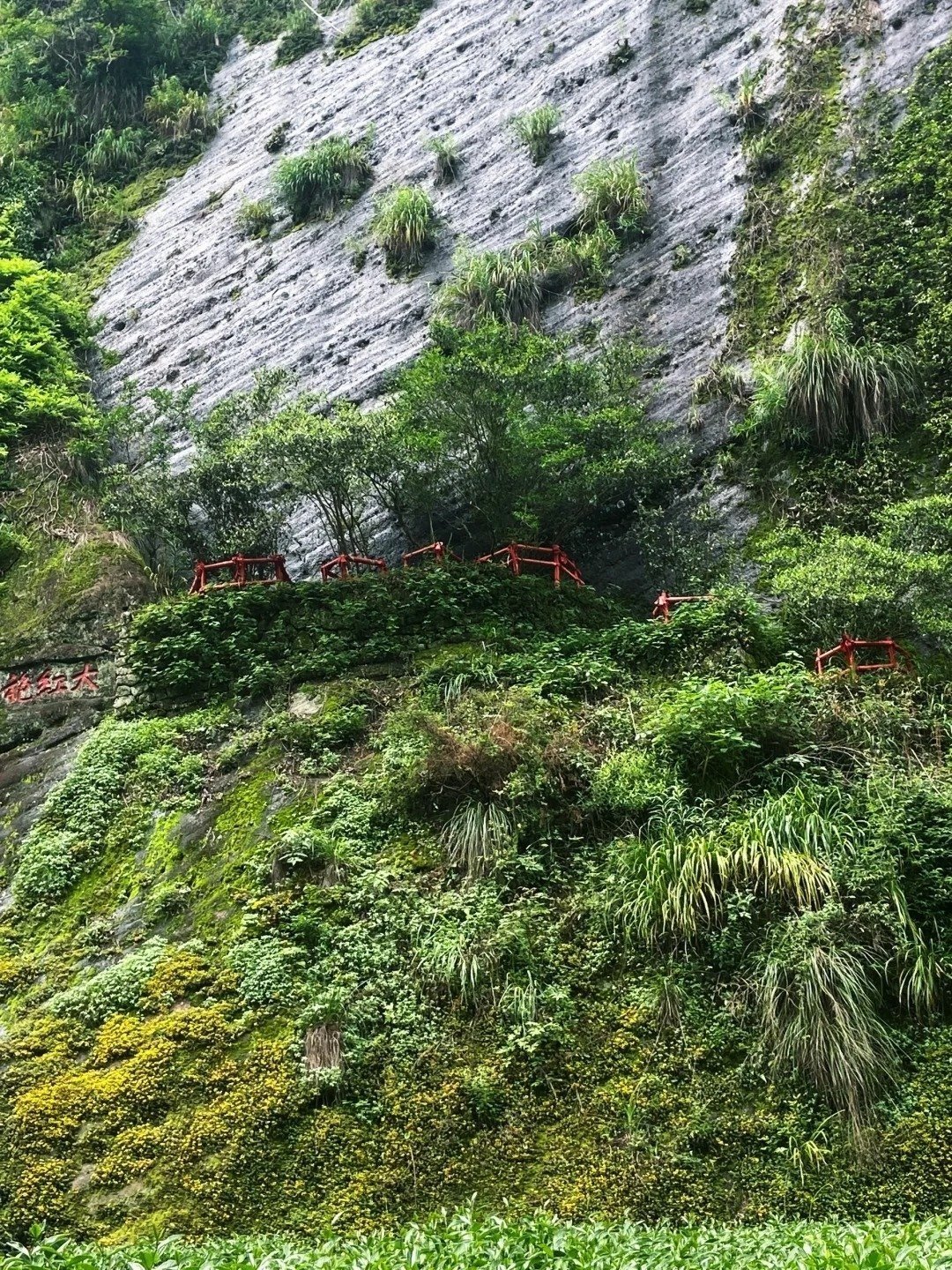
🌿 The Earliest Tea Brewing Methods in China
🌿 The Earliest Tea Brewing Methods in China
The earliest tea brewing methods in China are recorded in the ancient text "Guang Ya" (广雅). According to this text:
“To brew tea for drinking, first roast the tea leaves until they turn red, grind them into powder, place the powder in a porcelain vessel, pour hot water over it, then add green onions, ginger, and orange peel as flavoring.”
This description highlights that even in ancient times, people experimented with tea brewing methods. The practice of brewing tea with boiling water and enhancing the flavor with condiments like onions, ginger, and orange peel was already widespread. This early approach laid the foundation for the diverse tea brewing methods that we see today.
📜 Brewing Techniques from "The Classic of Tea" (茶经)
The most influential guide to tea preparation is "The Classic of Tea" (茶经), written by the tea master Lu Yu (陆羽). Lu Yu emphasized the art of boiling tea and introduced a methodical process for ensuring the best taste and aroma.
One of his key insights was the concept of "Mo Bo" (沫饽) — the delicate frothy layer that forms on the surface of the tea during boiling. Lu Yu stressed that this froth was the “essence of the tea soup”, and ensuring its even distribution in each bowl was crucial. If the froth was unevenly divided among the cups, the flavor of each cup would differ, which was seen as a mistake in tea preparation.
Lu Yu placed great importance on both the fragrance (香) and taste (味) of tea. He argued that tea appreciation required more than just visual inspection of dry leaves. Instead, the true quality of tea could only be assessed through a sensory experience involving tasting the tea soup and smelling its aroma. As Lu Yu famously stated:
"You cannot judge tea quality by sight alone; you must taste it and smell its fragrance."
This philosophy still guides modern tea appreciation and evaluation techniques.
🍵 Modern Tea Tasting Techniques: The "3-3-3 Formula"
In modern tea appreciation, the sensory experience has evolved into a structured process. One popular method for professional tea tasters and tea enthusiasts alike is the “3-3-3 Formula”. This method helps tea drinkers appreciate the full spectrum of a tea’s characteristics by focusing on three key sensory categories:
🔍 1. Three Looks (三看)
Look at the Dry Tea: Observe the shape, size, and color of the dry tea leaves. Are they tight or loose? Twisted or straight?
Look at the Tea Soup (汤色): Observe the color and clarity of the brewed tea. Is it bright, clear, and vibrant?
Look at the Leaf Base (叶底): After brewing, examine the leaves at the bottom of the teapot or gaiwan. Are they tender, complete, and evenly colored?
Tip: High-quality Wuyi Rock Tea (Yancha) often has thick, glossy, and tightly twisted dry leaves. After brewing, the leaves should be soft, flexible, and display a vibrant reddish-green hue.
👃 2. Three Smells (三闻)
Smell the Dry Leaf Aroma (干香): Before brewing, take a moment to smell the fragrance of the dry tea leaves.
Smell the Gaiwan Lid Aroma (盖香): During brewing, smell the inside of the lid of the gaiwan. The trapped steam reveals the tea's hidden fragrance.
Smell the Cup Base Aroma (杯底香): After finishing a cup of tea, smell the bottom of the cup. This lingering scent is often the most revealing aspect of a tea’s fragrance.
Tip: When evaluating Da Hong Pao (大红袍), expect an aroma of orchids, roasted nuts, and a hint of charcoal. The fragrance on the gaiwan lid should be sweet and long-lasting, while the cup base often reveals the deeper, more lasting aromas.
👅 3. Three Tastes (三品)
Taste the Roast (火功): Evaluate the roasting level of the tea. Is it light, medium, or heavy? This greatly influences the taste and aroma.
Taste the Flavor (滋味): Experience the overall taste — is it smooth, sweet, or astringent? Is there a lasting “hui gan” (回甘) — a pleasant aftertaste of sweetness?
Taste the “Yan Yun” (岩韵): “Yan Yun” is a term specific to Wuyi Rock Tea (Yancha) that refers to the "rocky charm" or minerality found in the flavor. This unique sensation reflects the terroir of Wuyishan’s rocky cliffs.
Tip: High-quality Wuyi Rock Tea, like WuYi Star's Da Hong Pao, will have a perfect balance of roast, flavor, and “Yan Yun”. A great Da Hong Pao will leave a strong and lasting hui gan (sweet aftertaste) and an unmistakable "rocky charm" that lingers on the palate.

Da Hong Pao Mother Trees
Jiulongke — The Birthplace of Da Hong Pao Mother Trees
Jiulongke, a legendary tea-growing area in Wuyishan, is celebrated as the origin of the Da Hong Pao mother trees. This extraordinary land has nurtured six rare mother trees, embodying the essence of Wuyishan’s rich tea culture and history. These iconic trees are treasured not only for their rarity but also for their profound cultural significance.
🌿 The Origins and Legacy of the Da Hong Pao Mother Trees
Tucked away on the steep cliffs of Jiulongke, the six Da Hong Pao mother trees have stood strong for over 360 years. Their age, uniqueness, and connection to China's tea heritage have earned them a place on the “Wuyishan World Natural and Cultural Heritage List” recognized by the United Nations.
These trees have become global symbols of tea excellence, representing the highest quality Wuyi Rock Tea (Yancha) available. Their influence extends far beyond tea enthusiasts, resonating with collectors, cultural heritage advocates, and historians alike.
💎 The Rarity and Market Value of Da Hong Pao Mother Tree Tea
Tea from the Da Hong Pao mother trees is considered the most prestigious and valuable tea in the world. The following milestones illustrate its legendary status:
1998: 20 grams of Da Hong Pao mother tree tea sold at auction for 156,800 RMB (approx. USD 21,000).
2005: Another 20-gram batch was auctioned for a record 208,000 RMB (approx. USD 26,000).
These staggering prices highlight the scarcity, uniqueness, and symbolic value of mother tree Da Hong Pao.
🛡️ Protecting the Mother Trees: From Harvest to Heritage
To protect these irreplaceable trees, the Wuyishan Municipal Government announced in 2006 the “harvest suspension and conservation” of Da Hong Pao mother trees. This marked the end of any future commercial harvesting from the six original trees.
The final batch of tea from the mother trees was crafted by WuYi Star and presented to the National Museum of China as a priceless cultural artifact. This gesture symbolizes the end of commercial production and reinforces the role of Da Hong Pao as a symbol of China's natural and cultural heritage.
Additionally, in 2003, the local government took out a 100 million RMB (approx. USD 12 million) insurance policy on the mother trees, highlighting their extraordinary value and the importance of their preservation.
📜 The Cultural Significance of Jiulongke
More than a place where legendary tea trees grow, Jiulongke is a site of cultural heritage, inspiring stories that continue to be passed down through generations. Two notable tales add to its mystique:
The Legend of the Scholar's Pilgrimage
It is said that ancient scholars who passed the imperial exams would visit Jiulongke to pay homage to the mother trees. This act symbolized their pursuit of the "highest scholar" status — a reflection of the high regard held for Da Hong Pao, often referred to as the "Top Scholar" of teas.The Diplomatic Tale of "Half the Kingdom"
Da Hong Pao is known as a "National Gift Tea". It has been presented to world leaders and dignitaries as a symbol of China's hospitality and cultural pride. This diplomatic tradition has led to stories of how Da Hong Pao "represents half the kingdom" due to its prestige and value.
These tales have made Jiulongke a sacred site for tea enthusiasts, historians, and cultural travelers alike.
🌟 WuYi Star: Guardian of Jiulongke’s Legacy
As the only authorized processor of Da Hong Pao from the mother trees, WuYi Star takes great pride in protecting and promoting this rich cultural legacy. With a mission to maintain the authenticity of Wuyi Rock Tea, WuYi Star ensures that each tea leaf reflects the essence of Jiulongke’s legendary origin.
Through its commitment to tradition, WuYi Star preserves the heritage of Jiulongke while offering tea lovers worldwide the chance to connect with this profound history. The legacy of the Da Hong Pao mother trees continues to grow, inspiring awe and admiration in tea connoisseurs around the world.
#WuYiStar #KnowWuYiStarKnowDaHongPao
